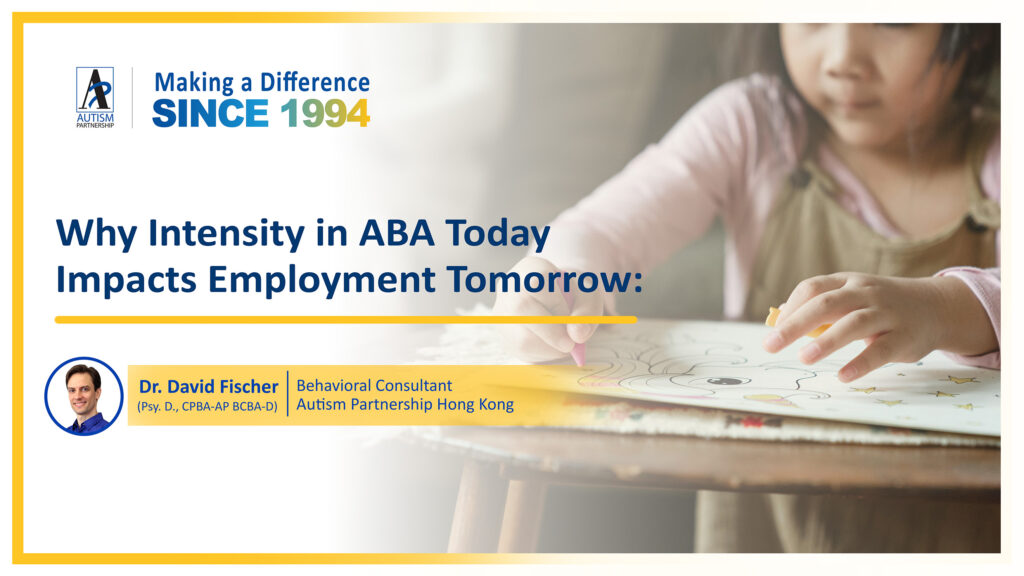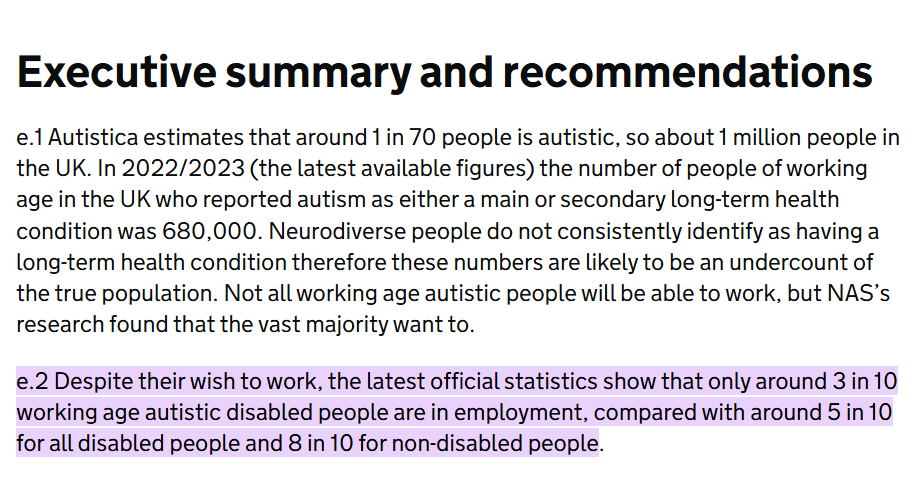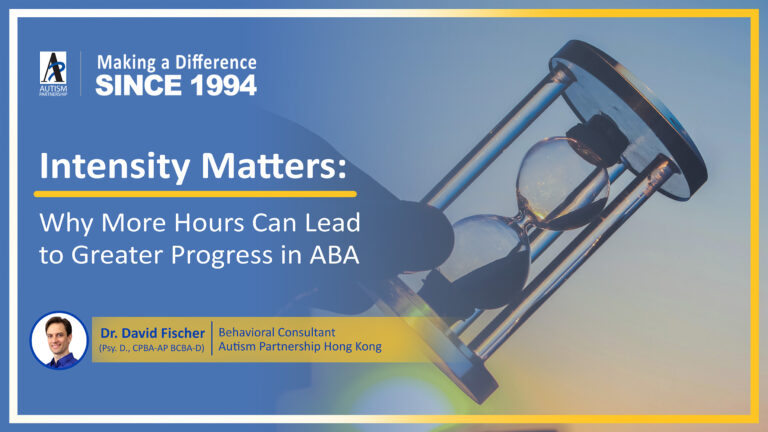
When most parents start ABA therapy for their child, they are thinking about immediate concerns: communication, behavior, independence, or school readiness. However, there is another important factor to consider and that is your child’s future as an adult.
A recent UK government report, The Buckland Review of Autism Employment (2024), sheds light on a troubling reality. That is despite wanting to work, only 3 in 10 autistic adults are employed.
Even for autistic graduates, the outlook is not much better. They are twice as likely to be unemployed after university, and only 36% secure full-time work within 15 months. Many end up underpaid, underemployed, or on short-term contracts.
These statistics are not just numbers. They’re a warning.
They make one point very clear: early, intensive intervention matters more than ever.
Twenty years ago, high-quality ABA services were not widely available. Many children on the spectrum received minimal support, inconsistent programming, or rigid and outdated methods. In some cases, families could not access intervention at all.
So, it is no surprise that today’s adult outcomes reflect those early gaps.
The lack of intensive, individualized support during the most critical learning years left many without the foundational skills needed for independence, self-management, and employment.
We now know so much more. And more importantly, we have access to better tools.
One of the most powerful tools is intensive ABA therapy. A major 2017 study by Linstead and colleagues showed that children who received more hours of ABA each week made significantly greater progress in areas like communication and language, social interaction, cognitive and executive functioning, play and daily living skills, and academic readiness.
These are the exact skill areas that prepare children, not only for school, but for employment, independence, and adult life.
This study reminds us that simply “doing ABA” is not enough. The number of hours and quality of delivery directly impact the long-term outcome.

Intensive ABA (often 20–40 hours per week) allows for more opportunities to teach and practice essential skills, faster learning and stronger retention, better generalization to real-life settings, and time to address multiple domains (language, behavior, social skills) simultaneously
And when done right, with Progressive ABA strategies, it is flexible, individualized, and meaningful.
This is not simply about keeping a child busy. It is about building the skills they will use for the rest of their lives.
If we want to improve the future outcomes for this generation of children with ASD, we must act now.
Do not settle for low-hour programs or providers who recommend the minimum without a thorough assessment. Ask is the program intensive enough to drive real progress? Is it led by experienced, well-trained professionals? Is it preparing my child not just for school, but for life?
At Autism Partnership, our approach is grounded in research and decades of experience. We have seen how early, intensive, high-quality ABA can help children go from struggling with basic communication to thriving in school and eventually, into adulthood.
The low employment rates for autistic adults today reflect a past where quality services were limited or unavailable.
But your child’s future can be different.
We now have the research, the methods, and the clinical experience to deliver treatment that truly prepares children for meaningful lives, including work, independence, and social participation.
ABA is not about merely short-term gains.
When done early, intensively, and with skill, it becomes a lifelong investment.
Linstead, E., Dixon, D., Hong, E., Burns, C., French, R., Novack, M. N., & Pritz, H. (2017). An Evaluation of the Effects of Intensity and Duration on Outcomes Across Treatment Domains for Children with Autism Spectrum Disorder. Asian Journal of Psychiatry, 25, 160–167.
Dr. David Fischer received a doctoral degree in Clinical Psychology from Rutgers University, USA, advised by Dr. Sandra Harris. Since 1999, he was worked in the field of Applied Behavior Analysis and with individuals diagnosed with a developmental disability. He completed his pre-doctoral internship and post-doctoral fellowship at the Marcus Institute in Atlanta, Georgia working in the severe behavior unit, short-term-out-patient clinic, feeding disorders unit, and early intervention clinic. From 2007 – 2011, he trained public school teachers to instruct and manage the behavior of their students diagnosed with Autism spectrum disorder. He also was the clinical coordinator of the Asperger’s College Program, which provides support services to Rutgers students diagnosed with Asperger’s Disorder.

When considering ABA therapy for a child with autism, parents often ask: “How many hours should my child receive?” It’s an important question, and the answer can make a substantial difference. While every child is unique, decades of research has shown the intensity of therapy matters. A major study published in 2017 by Linstead and […]

When considering ABA therapy, the first questions are often about hours, goals, or cost. There is another overlooked factor that may be even more important: Who is delivering the therapy? An exemplary case study published in 2020 by Ferguson and colleagues at Autism Partnership Foundation showed just how much of a difference the quality and […]

If you’ve ever wondered whether how ABA is delivered really makes a difference, new research has provided a clear answer: Yes, it absolutely does. In 2022, a team of researchers, led by Dr. Christine Milne, in collaboration with Dr. Ronald Leaf, Dr. Justin Leaf, Dr. John McEachin, and others, published a study that directly compared […]
Please share to let more people learn about ASD and ABA therapy:
AP holds the belief that with quality Autism Partnership Method (APM) treatment, individuals with autism should reach their fullest potential and achieve the greatest degree of independence and highest quality of life possible.

Sign up now to get ABA and Autism related news delivered to your inbox. Enter your email to get started
Hong Kong Center
Kowloon Center

All information received will always remain confidential. We will contact you as soon as we review your message. Thanks